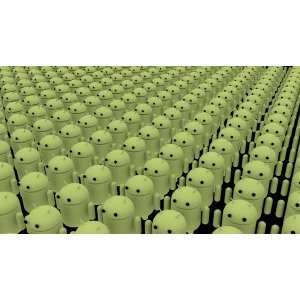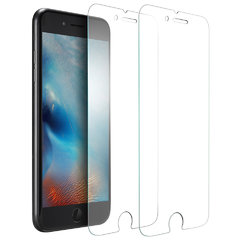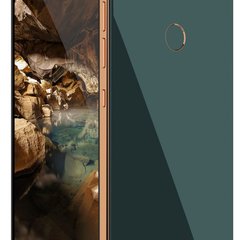How to set up Android phone?

Congratulations on buying your first Android phone. Very soon you will see that you have stepped into a whole new dimension of mobile telephony, and we will try to present you, so to speak mythical use of such devices, with emphasis on how the set up settings of your new device. Possibilities of Android devices are almost endless and if you take a little time to read this text you will build solid foundation for comfortable handling your device.
[caption id="attachment_502" align="aligncenter" width="210" caption="Future of mobile telephony"][/caption]
The best feature of Android devices is the ability to customize them for yourself, which at first hand, sometimes reject users 'cause of understanding the very complicated adjustments. While the Android OS is available on many devices, this tutorial will focus on the Android for mobile phones as devices that use this OS the most.
INTRODUCTION
Each Android phone more or less different from each other but some basic elements are the same for everyone. The main features are the 4 most natural keys (keypad but it can be as touch screen, as well) used to access the Android device. These are: MENU, HOME, SEARCH, and BACK.
However, the main way of interaction with the Android device is by touch screen. Most Android phones today are equipped with a capacitive touch screen that provides a simple interface and takes little pressure.
Your new mobile phone is equipped with the Android operating system for reasons that would make easier the users to make calls, listen to music, surfing the internet and of course access to a number of supported applications.
[caption id="attachment_503" align="alignleft" width="175" caption="HTC Incredible S - Android Froyo"][/caption]
HOME SCREEN
The first page that you can see on your device. HOME PAGE, which owns almost every device. Each part of the Home screen can be edited by the users with icons (application) or links that users most commonly used. This arrangement of the home page of course depends on each user device individually and soon you'll eventually get experience with the most useful applications. For example: Home page may contain a part where you set the icon to connect to social networks like Facebook or Twitter, the icons to access the camera and sending text messages, another for the calculator or search engines etc. Any schedule of the home you organize, the point is a quick and easy access to applications or options which would otherwise be accessed via the Main menu and you will agree it is a difficult and time-demanding way. For all versions of Android, to remove icons from the home screen "press" desired icon long enough until you feel a short vibration, and then holding your finger on the icon drag the icon to bottom of the display remove from the homepage. This method applies to any folder, application or widget to be removed from the homepage. To replace or add an application on your home page, press and hold your finger on a blank spot on the display and it will open a menu to add content. The same task can be made by pressing the Menu button on the home screen and selecting the option to add. This same method is used to add new wallpapers by holding your finger on a blank spot on the display / menu / add / wallpaper.
APPLICATIONS
To access a particular application, simply click with finger on the applications that are located on the home page or open Application tray (the place where they stored all the applications) by pressing or pulling mentioned tray to the top of the display. To put a shortcut (links that you would like to have the home screen image) like YouTube, Gmail, or Browser you must first open the tray application, holding your finger on the desired application until you feel the vibration, then it will appear the home screen, where you simply place the icon (pull with finger) the selected application to the desired position. Another way is again by menu / add to a home / shortcut / and preferred applications.
GENERAL USE
When you use your phone and you get lost or you can not find the action you want to realize, whether in the main Android or one of many applications, press the Menu key. Context of Menu button functions change depending on the actions you perform on your phone and this is one very important thing (or perhaps the most frustrating). For example: if you are in the directory "Contacts" of your device, pressing the Menu button you will open the options for handling contacts, such as adding contacts, search contacts, delete contacts and so on.
[caption id="attachment_504" align="aligncenter" width="210" caption="Every second mobile phone is with Android platform"][/caption]
MENU AND BACK
I would like to point out that this is another key area that can confuse new users of Android devices. The any time while using of application, you can return to the home page by clicking HOME button.
What users need to understand that the pressure on the HOME button does not close the application in use like the other smartphone. Returning to Home, an application that is used will continue to work in the "background". Press it again to activate the application you will open the application page, where were you last time. For example: suppose you have reviewed the results of the games at one site and wish to change the music while you play.
Pressing the HOME, you exit from that page, set music on the player and pressing your browser to return to the same page and you'll see the same results that you review before changing the music. Imagine that like Minimize option on your desktop computer.
BACK option works in a different way. By setting this option, you can achieve to take different things but basically Back option is used to exit or close applications. This option is useful when you have finished what you were doing on the Internet for example, by pressing the BACK option off your application and not only you will save battery power but also memory that your device has.
This is important fact because if your device has open a few applications in the same time you will make faster exhaustion of the battery and slower operating of your device (multiple applications that simultaneously work on your device "suffocate" the device and significantly slow down the functioning of the same). With Android 2.0 +, Google introduced a new section in the System settings-in (system setup) called Running Services (applications that are currently in operation). This option provides a quick overview of applications that are active and from which you can extinguish all unnecessary applications in the case of slow functioning of your device.
These would be some of the basics elements and we hope that it will be useful for your Android phone. As we have already mentioned the possibility of using Android devices are almost endless and you will realize yourself with longer using of your device. One thing is certain, and that is the fact that today every second phone in the world is Android which speaks clearly about the credibility of these devices. Share with us your experiences of the use of these devices.
Kategórie
Futuristic Future Review Market Compare models Coming Soon General New Technologies News Actual Alcatel Tips Huawei Gorilla glass Comparation Smartwatch Apps Software Apple Blackberry HTC Motorola Nokia Sony LG Samsung Android Sony Ericsson Interesting Little school Inovations Microsoft Symbian iOS Acer Google Games Popular
Populárne príspevky
Tagy
New model Android Samsung nokia apple iPhone review Inovations HTC Blackberry iOS Google LG motorola Operative system research sony Galaxy update market share Samsung Galaxy S8 galaxy s5 Ice Cream Sandwich LG G3 price Sony Ericsson AMOLED LG G3 Future vision Gingerbread definition Tablet camera Huawei game iPhone 5S LG G3 screen
Vyhľadávanie
Vyhľadajte a pozrite si najnovšie príspevky blogu.







